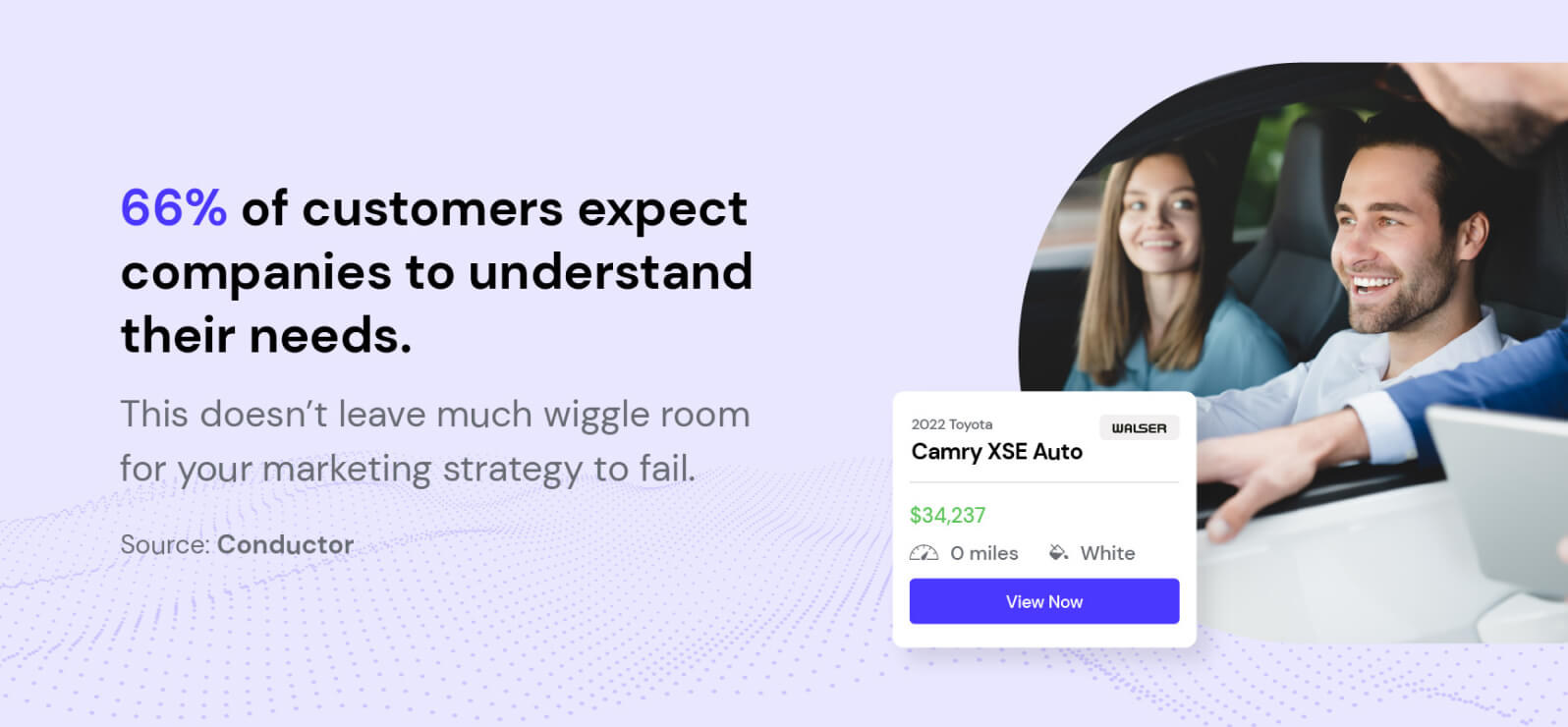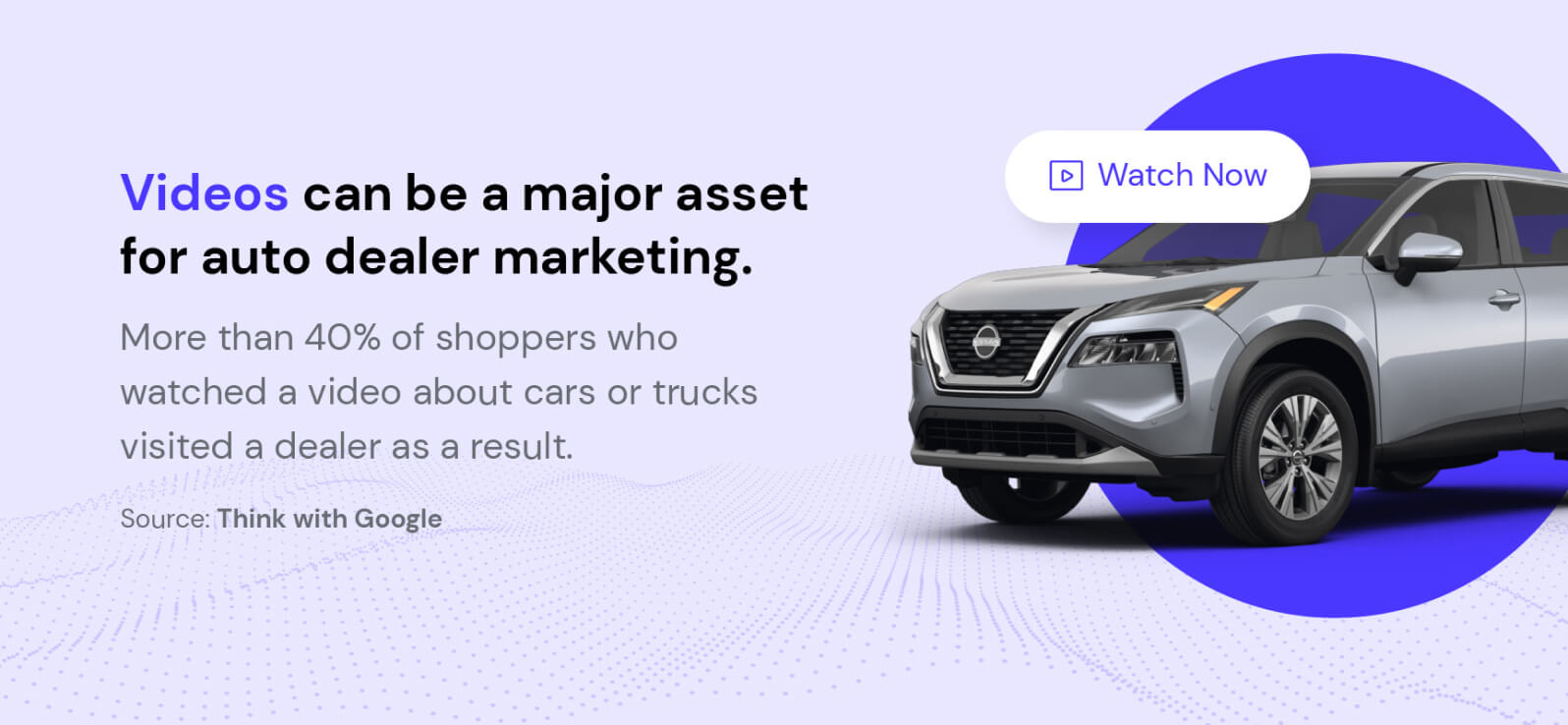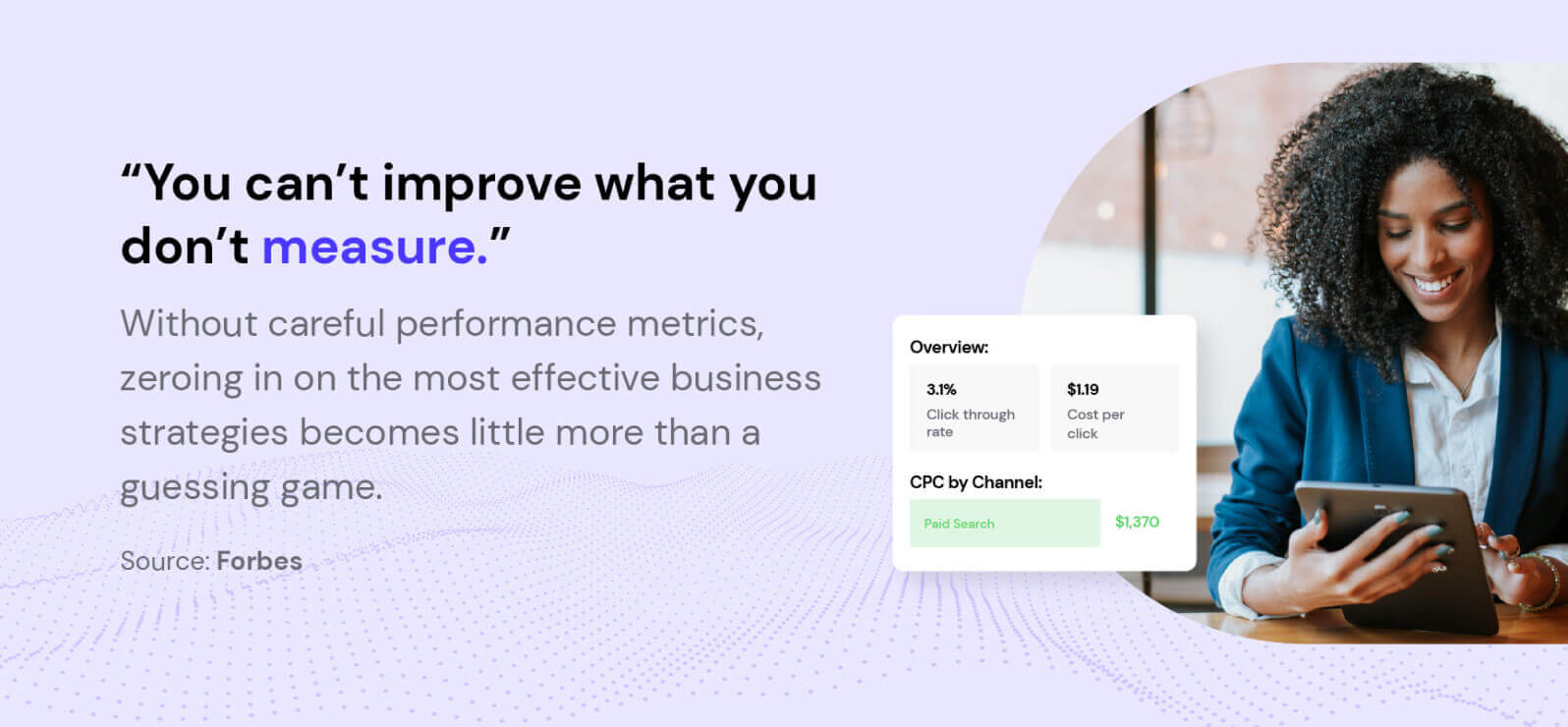AN OVERVIEW
Dealership Marketing: Driving Sales in Today’s Market and for the Long Haul
There’s no question that the retail automotive industry has been on a roller coaster ride for the past two years. Dealers have had to adapt to everything from a global pandemic to supply chain issues to a chip shortage.
While many aspects of our industry ebb and flow for reasons beyond our control (e.g., new car inventories shrink and grow, auto loan interest rates rise and fall, etc.), one vital element at the heart of it all remains firmly in the grasp of dealers: the retail automotive customer experience (CX).
Today, most retail buying journeys start online. As a result, many dealers have been scrambling to “be more like Amazon” by adopting automotive digital retailing solutions. To this, we at Fuse say, “Yes, and…” — meaning that the retail automotive CX doesn’t stop there.
Yes, car buyers want an Amazon-like experience with everything they need to make a purchasing decision online at their fingertips — and… they want the transaction to be fast and easy. That second part is where the retail automotive CX typically falls short.
In this deep dive into dealership marketing, we will examine the digital side of the retail automotive CX equation, with the ardent belief that the in-store transaction should in fact be both fast and easy (thanks to the implementation of a fully transparent sales process and a desking process expedited by technology to realize sign-and-drive in under an hour).
Car Dealer Marketing: Getting It "Right"
For some dealers, marketing is a passion. For others, it’s a necessary evil. For consumers, it offers a glimpse of what they can expect when doing business with you.
And while car dealer marketing encompasses nearly all efforts made by a dealership to attract, engage, and convert new and existing customers, its success is largely the result of a perfect storm of the right person receiving the right message at the right time and place. Following is an example of one such “lightning-strike” moment for a potential car buyer:
I pulled out of Midas, and at the stoplight, I was checking Facebook when I saw an ad that said, “We buy cars, any age, any mileage, any condition." When I got home, I decided to Google your dealership to check out the inventory on your website.
In this scenario, a lead has bitten your dealership’s proverbial hook. Now your website needs to reel them in. This includes the site having everything from intuitive navigation to a fast and responsive user experience. It also requires a form, chatbot, or good old-fashioned address and phone number to serve as the net that secures the catch. However, thinking about potential car buyers as fish isn’t the best way to deliver a good retail automotive CX.
Putting Customers First: What Dealerships Stand to Gain
The dealers who are poised to steer clear of the rocks when the high tide of record profits inevitably recedes are the ones putting customers first by embracing transparency, speed, and simplicity in the digital realm as well as on the showroom floor. But doing so takes initiative.
You may feel as though profits have risen enough to carry you by. This type of thinking can lead to complacency. Even the automakers themselves aren’t immune to the cost of stagnancy.
According to an Automotive News article, overall automotive brand loyalty fell since the beginning of the inventory shortage. Loyalty for brands like Ford, Hyundai, and Chevrolet dropped from 54.8% in the 14 months prior to an average of 52.1% in the 14 months after.
Luxury brands fared worse. Lincoln, Jaguar, and Porsche dropped 4.7% to an average of 46.3%. Tesla, on the other hand, didn’t experience a decline.
In the article, Tom Libby, associate director of loyalty solutions and industry analysis at S&P Global Mobility, credits the company’s success to the unique personality and brand-building of CEO Elon Musk. However, there is a lot to be learned from Tesla in terms of the retail automotive CX — namely, putting the customer first.

Traditional Marketing
When it comes to marketing, a customer-first strategy puts the wants and needs of the customer at the center of everything a dealership does. This philosophy applies to traditional marketing as well as digital marketing. So, your dealership’s print ads, billboards, direct mailers, TV commercials, and radio promotions should focus on meeting those customer wants and needs, too. For example:
- A non-customer-first radio promotion might mention the fact that your dealership wants to clear out last year’s models. Maybe you sprinkle in some FOMO about it being the customer’s last chance to snag a deal on a brand-new 2022.
- A customer-first radio promotion might elaborate upon how a particular vehicle will improve a customer’s life. Remember that old jalopy from the example earlier in this article? Imagine the cost and hassle the customer is experiencing in repairs to keep the thing running, and focus on showcasing the related time-, money-, and headache-saving benefits of owning a newer, meticulously inspected vehicle from your dealership.
Remember — in the end, you're not just moving inventory; you're providing value to your customers.
Digital Marketing
While digital marketing is a box every dealer needs to check in today’s day and age, a successful digital marketing effort takes more than simply “having a website”, “being on social media”, or “doing digital ads”. It also requires establishing an emotional connection.
According to Psychology Today, "functional magnetic resonance imaging (fMRI) shows that when evaluating brands, consumers primarily use emotions (personal feelings and experiences), rather than information (brand attributes, features, and facts)." So, as marketers, the goal is to trigger the right feelings and generate an emotional response to attract customers to our business.
One of the most powerful feelings we can tap into is trust. While research shows that trust in certain social institutions or societal leaders is waning around the world, brands are still capable of evoking strong feelings of trust, love, and respect. But how?
The answer is transparency (yet another way to put customers first). For example:
A transparent digital ad will showcase an exact vehicle, like the 2022 Honda CR-V EX AWD Sport Utility VIN: 2HKRW2H53NH664336, available at a low monthly payment price that both entices customers and ensures dealership profitability. (The best part is that, when a dealership uses Fuse’s dealership marketing and pricing software to dynamically update its website specials and digital ads based on its current and incoming inventory, the tedious work of making those updates is automated.)
Dealership Marketing Trends to Keep an Eye On
Aharon Horwitz, the CEO of AutoLeadStar — a company with a platform that creates 1:1 sales-ready matches by leveraging cutting-edge, customer-centric, AI-driven automation, recently sat down with Fuse and revealed some of the top dealership marketing trends grabbing his attention. The customer-first tenets of transparency, speed, and simplicity also permeate here.
Personalization
Personalization continues to be a driving force in digital marketing. According to McKinsey, personalization can lower acquisition costs by as much as 50%, boost revenues by up to 15%, and improve marketing spend efficiency by 10% to 30%.
However, in the era of privacy concerns and the phasing out of third-party cookies that seemingly follow consumers everywhere they go online, dealers have to go about things a bit differently.
Because access to aggregated consumer data from third parties is becoming obsolete, it behooves dealers to use their own first-party data to target the right consumers with relevant messaging and offers.
For dealers who aren’t yet in the data game, Horwitz advises two things:
- First, the data dialogue will seem overwhelming at first – kind of like a foreign language. Once you embrace the fundamentals, you’ll not only be able to see how it can transform your business, but you’ll be able to engage it with confidence.
- Secondly, there’s a multi-step process to getting started. That journey starts by figuring out all your data silos and identifying what they are: your CRM, your website, and everything in between.
Data Strategy
Horwitz believes the smartest dealers today are committed to creating a real data strategy:
- We talk about this a lot with our dealers: whether OEMs try to sell directly, whether EVs totally transform the business model, or whatever disruptive trends come down the pike, data strategy is essential to short and long-term success.
- To a lot of people, ‘data strategy’ may sound like a rather scientific term. In actuality, it’s a key component to sound customer service.
- When I talk about data strategy, I’m describing an end-to-end process of collecting, cleaning, normalizing, consolidating, and organizing data in a way that gives customers an amazing buying experience.
Avoiding Complacency
According to Horwitz:
- Dealers enjoyed a windfall over the last few years. Their P&Ls were absolutely astounding, and now, they have serious war chests at their disposal.
- But here’s the thing: the auto industry battle is just getting going. Dealers should be thinking about where they can invest their resources...
- I don’t mean to be dramatic, but the dealers who adapt will thrive, and those that don’t — well, they likely won’t.
Related Read: Automotive Marketing Trends: 5 Strategies for Success
Car Dealership Marketing Strategies That Work Right Now
Research shows that traditional dealership advertising such as print, billboard, TV, and radio brings in an average total profit of $1,702 per vehicle, while digital marketing brings in $2,514 per sale. Stats like these serve to illustrate the bottom-line benefit of employing a predominantly digital approach to car dealership marketing. It’s no wonder that the five dealership marketing strategies seeing the greatest successes today also lean heavily towards the digital realm:

Display and Video
The Google Display Network provides access to millions of consumers as they browse websites, apps, and Google-owned properties like Gmail. In Google Ads, display campaigns can be set up to serve image ads with advanced targeting options, while video ad formats can be utilized to engage consumers on YouTube and Google-partner video sites.
Videos are especially well-suited for auto dealer marketing. They're effective tools for showcasing vehicle features in ways text and images can't while providing dealerships valuable opportunities to build brand awareness.
Marketplaces
Remember all that talk about how marketing success is largely the result of a perfect storm of the right person receiving the right message at the right time and place? Marketplaces like Cars.com, Autotrader.com, Cargurus.com, Craigslist.org, and Facebook.com/Marketplace are the right places to reach the right people with the right messages at the right time, because their visitors are motivated shoppers.
Paid Search
According to Adpearance, leveraging Google Smart Bidding for paid search is a smart bet. Unlike a Micro-Moments strategy that bids on long-tail keywords first, and then allocates the remaining budget to higher funnel keywords, Smart Bidding employs machine learning to prioritize users with the intent to purchase over users searching for a brand for the first time, allowing dealers to bid on keywords that were previously reserved for Tier 1 OEMs or too high-funnel to be effective.
Organic Search
Organic search engine optimization (SEO) has many facets. The facets delivering the strongest returns for dealerships right now involve local SEO, keyword targeting, and content marketing.
- Local SEO: To start, every car dealer should claim and set up a free Google Business Profile (formerly called Google My Business). With a Business Profile on Google, you can manage how your dealership shows up across Google products, like Maps and Search. According to a BrightLocal survey, 64% of consumers reported using Google Business Profiles to find local businesses’ contact information, while just 49% cited use of the businesses’ own websites.
- Keyword targeting: Amidst the inventory shortage, Dealer Inspire’s client Dependable CDJR saw a 65% increase in conversions year over year by strategically targeting organic keywords related to branded vehicle “order” searches on a pre-order focused, search engine optimized website landing page.
- Content marketing: Publishing unique and useful resources like blog articles, videos, and guides on your dealership’s website can attract organic search traffic from potential customers in the early stages of their car-buying journeys. In addition to attracting leads, content marketing can help shape the retail automotive CX: 71% of car buyers surveyed for the 11th Annual Cox Automotive Car Buyer Journey Study reported greater satisfaction with how long the overall shopping experience took when the journey was mostly digital.
Traditional and Streaming TV
TV has been a popular and effective advertising medium for car dealerships since cable first made local TV ad spots possible. Once an exclusively cable space, TV advertising now includes cable as well as streaming video services and devices such as Netflix, Hulu, and Roku.
Referred to as OTT (over-the-top) advertising, streaming TV ads are an excellent way for dealers to reach the nearly 25% of car shoppers who have terminated their cable contracts in favor of internet-based options. To reach the remaining 75% of car shoppers, dealers should consider directing ad spend towards traditional TV network channels, as today’s economy is top of mind with consumers who are taking steps to curb discretionary spending.
Related Read: Essential Digital Marketing Strategies for Car Dealerships
3 Auto Dealer Marketing Tips for Success
One industry in which consumers don’t appear to be curbing their spending is retail automotive. Dealers who apply the following tips can capture a bigger slice of that spend:

1. Advance Your Audience Targeting
We’ve talked about data. That’s part of the puzzle. Having the right data can help you market to the right audience, which will help you use your marketing dollars wisely. A vendor like AutoLeadStar can provide deeper insights into your customer profiles, such as lifestyles and preferences, which can help you advance your audience targeting and build a more impactful auto dealer marketing strategy.
“It's important to know who marketers are looking to reach, and then ensure they’re reaching them with the right medium.”
John DeMarco, Experian Automotive
2. Connect with Consumers Across Channels
As we've mentioned, marketing success results from the right message landing with the right person at the right time and place. That’s why savvy dealers connect with potential customers in multiple places, including but not limited to: social media, online reviews, search engines, special-interest websites and publications, streaming TV, and email inboxes.
A unified yet omnichannel approach is the best way to cover your bases, ensuring consumers recognize your dealership, know you have the vehicles and services they want and need, and experience a fully integrated, frictionless retail automotive CX.
3. Track Performance and Adjust Tactics Accordingly
“You can’t improve what you don’t measure.” Often attributed to the business management guru Peter Drucker, this quote is every data-driven marketer’s mantra.
In other words, if you're going to invest in marketing your dealership, it pays to pay attention to your return on investment. If a campaign isn't getting the desired results or one medium performs better than the others, you can adjust your tactics. But you won’t know those things if you don’t track the performance of your marketing efforts.
The Bottom Line: CX Is the Battlefield for Market Share
While successfully marketing a dealership requires a dynamic approach, with the right technology and strategy, dealers can drive sales in today’s market and for the long haul. Embracing transparency, speed, and simplicity in all facets of the retail automotive CX is the key to winning the battle for market share.
Related Read: Grabbing Market Share During a Market Disruption
The Future of Automotive Retail
Contact Fuse today for help transitioning to a truly customer-first approach that drives sustainable profitability for your dealership.
The Future of Automotive Retail
Contact Fuse today for help transitioning to a truly customer-first approach that drives sustainable profitability for your dealership.



